There’s lots of hype around the largest shark to ever live, but also a lot of misinformation.
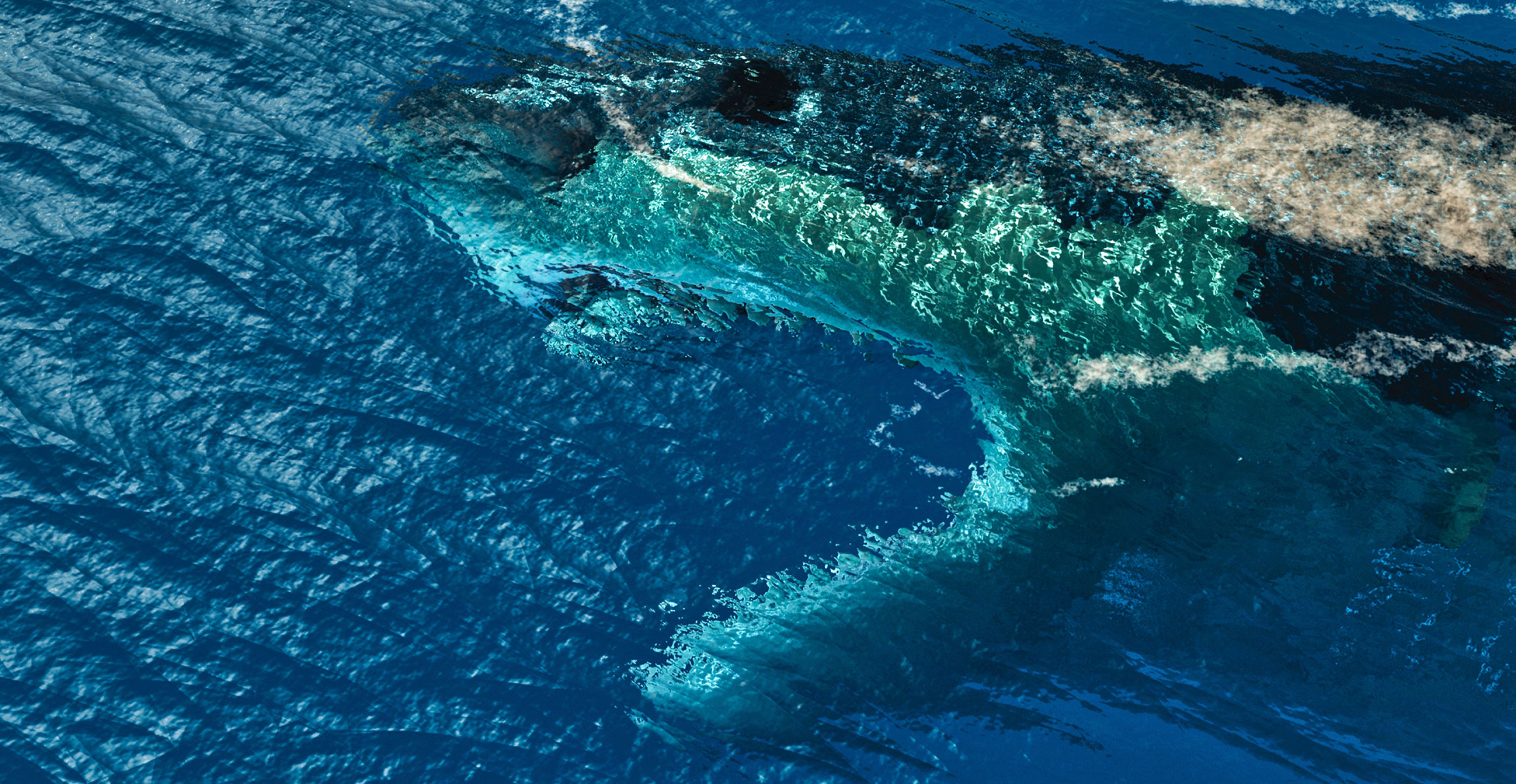
One of the most common questions we’re asked is whether there’s a chance that megalodon is still alive and hiding out in the deep sea? © Damiano Pierotti/ Shutterstock
It’s not surprising that the extinct, 24.3-metre-long shark Otodus megalodon is so popular. Imagining our oceans patrolled by a predatory fish three times the size of the great white shark from the film Jaws is as terrifying as it is fascinating.
We’re often asked whether we’ve got it wrong, and this famous shark is actually still alive? If we’ve only properly explored about 5% of the ocean, how can we be sure megalodon isn’t hiding in some deep, dark, unvisited place?
Let’s take a look at what we know.
When did megalodon go extinct?
One of the best pieces of evidence of megalodon’s extinction is their teeth.
Sharks’ teeth come in different sizes and shapes to suit their variety of lifestyles. Megalodon had the classic triangular, serrated kind.
Like a modern great white shark, megalodon’s teeth were arranged in multiple rows. Each time a tooth fell out, one in the row behind would be pushed forward as a replacement. Over megalodon’s 16-million-year existence, these teeth conveyor belts left the seafloor littered with old gnashers. Each tooth stood a chance of being covered by sediment and becoming a fossil.

Megalodon’s teeth were serrated and up to 18 centimetres long. It would have used them to cut through its prey, which included whales, large fish and other sharks.
Fossils give us a timeline of what animals lived when. We only find megalodon teeth in marine rocks that are 20 million to 3.6 million years old.
Nobody has ever found megalodon teeth younger than this – not as fossils, sub-fossils or even freshly fallen teeth. This evidence tells us megalodon went extinct 3.6 million years ago.
But why focus on teeth? Why don’t we look for big bones? It’s simply because teeth are often the only part of a shark’s body that survives to be found by us. Sharks, in the past and today, have skeletons made of cartilage. Like other soft tissues, cartilage easily breaks down after death. So, with only a few exceptions, teeth are all the evidence of megalodon we’ve got.
Is there any evidence that megalodon still exists?
Lots of big sea creatures spend most of their time out of sight of people, but we still know they exist.
Despite being up to 18 metres long, whale sharks aren’t often seen, but we know they’re the largest living sharks.
Whales, some of which are up to 30 metres long, are seen breathing and hunting at the surface, but most of their lives are spent beneath the waves. After death, these large mammals occasionally gas up and are found floating at the surface like big noxious balloons before falling to the seafloor to be scavenged.
Giant squids can grow up to about 13 metres long. We don’t often see healthy giant squids, but stressed and dying ones end up at the surface from time to time giving us direct evidence of their existence.
As for alleged contemporary megalodons, there’s been no such confirmed sightings, alive or dead.
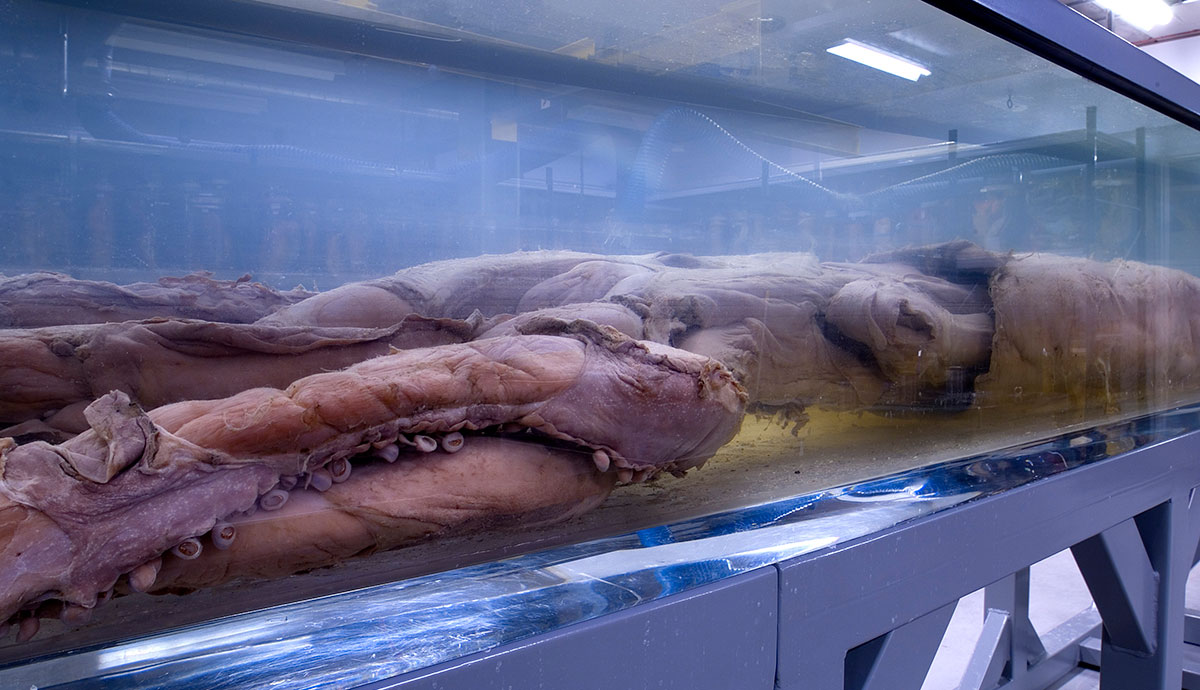
Giant squids are rarely seen, but there’s no question they exist. This is Archie, a female giant squid in the collections we care for that was unexpectedly caught by fishermen off the Falkland Islands in 2004.
If megalodon were alive and living out of sight, we’d expect to find not only recently fallen teeth but also some evidence of its hunting activity. For example, sperm whales eat giant squids, and we know this because we’ve found squid beaks in ambergris – a waxy substance produced in the digestive system of sperm whales. Plus, we sometimes see sucker mark scars on the bodies of sperm whales – a telltale sign of underwater battles between these two ocean adversaries.
For the most part, big predatory animals aren’t successful every time they hunt. Great white sharks, for example, can have a 40–55% success rate when ambushing seals. Megalodon probably missed every now and again too and had prey that escaped its clutches. But as far as we’ve seen, there are no modern animals swimming around with megalodon-mouth-sized bite marks on their bodies.
So, all in all, evidence of a modern megalodon is somewhat lacking.

This fossil whale bone was scored by sharp teeth and even has part of a broken megalodon tooth trapped in it. If megalodon were alive today, we might expect to find evidence of tooth marks on the bodies and bones of large modern marine animals.
Could a megalodon live in the Mariana Trench?
It’s 10,984 metres from the ocean surface to the bottom of Challenger Deep, the deepest point in the Mariana Trench in the western Pacific Ocean. That’s deeper than Mount Everest is tall. We’ve explored very little of it, so who’s to say megalodon isn’t hiding down there, out of sight of people?
Well, not only is the deep sea very deep, it’s also vast and incredibly empty. Once you reach the abyssal zone at 3,000 metres deep there’s barely any food. Down here and beyond, deep-sea creatures mostly survive on occasional carcasses and marine snow – small bits of organic material – that have drifted down from shallower, busier parts of the ocean.
That would be a problem for megalodon. A diet of debris and scant leftovers wouldn’t cut it for a shark of megalodon’s size. To survive on limited supplies like this, it would need a metabolism so slow it would probably have had to spend most of its life not moving at all. That’s completely at odds with the lifestyle we’d expect from a species that evolved as a predator of whales, large fish and other sharks.
In fact, today there are no sharks living much below 3,000 metres and scientists suspect that lack of food is the reason. Snailfishes are the deepest dwelling fishes, but we don’t find them much deeper than 8,000 metres, quite possibly for the same reason – there just isn’t enough to eat.
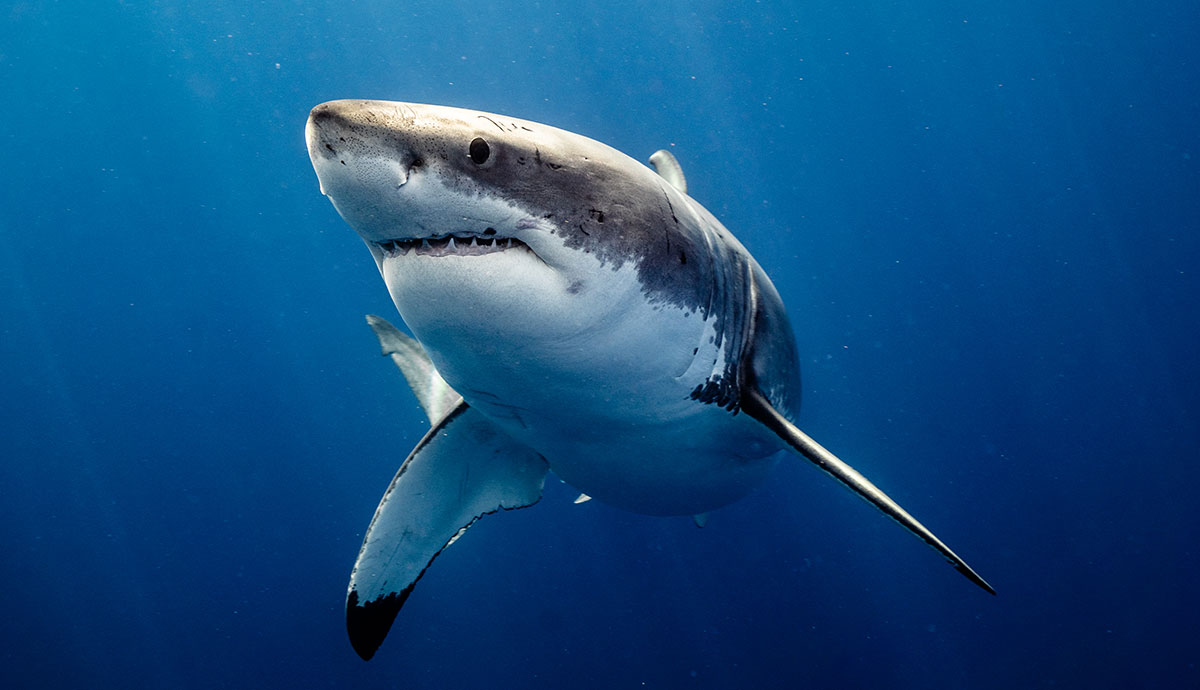
Great whites have been recorded diving down to around 1,000 metres beneath the surface. Some types of sharks spend time in deeper waters, but there are none living deeper than 3,000 metres. © Jsegalexplore/ Shutterstock
What killed the megalodon?
Megalodon disappeared from our oceans in the Pliocene Epoch, at a time when Earth’s climate was changing. It got colder and drier on land and the ocean temperature and sea levels dropped too.
We only find megalodon teeth in rocks that formed in warm water, which tells us that this was their preferred habitat. But as the ocean cooled, these areas shrank. Retreating seas and the emergence of new land masses may have added to their problems, splitting populations and deflecting ocean currents from their normal paths.
Megalodon’s dinner options were also likely disrupted. As the planet changed, the number of animals at the base of the food chain decreased. Like falling dominoes, this would have had knock-on effects all the way up to apex predators.
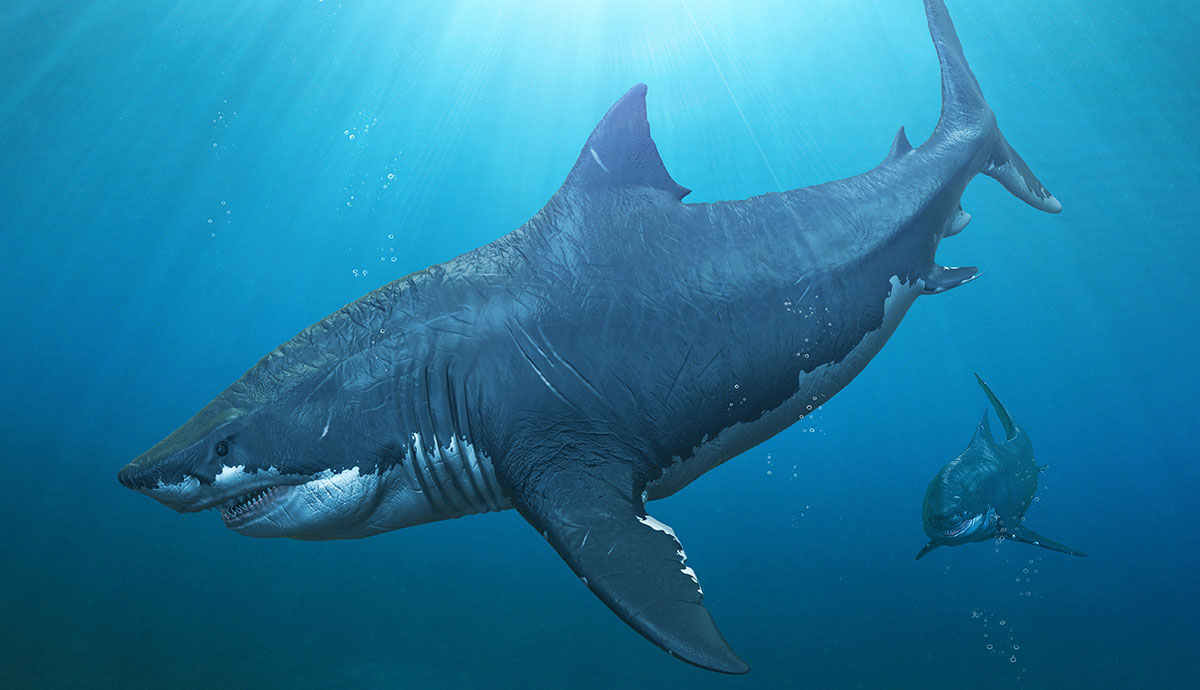
While we know megalodon is extinct, our understanding of why is still evolving. © Herschel Hoffmeyer/ Shutterstock
Competition with prehistoric great whites may also have contributed to megalodon’s demise. By studying their teeth, we can see that the diets of these two sharks overlapped. Megalodon’s great size and energy needs may have put it at a disadvantage, leading to great whites outcompeting them.
Extinctions can be complicated events. Exactly why megalodon went extinct is something scientists are still trying to work out. But there’s mounting evidence that it was some combination of changing climate, declining prey species and competition.
Modern megalodon myths
Thanks to fictional giant sharks, such as those in the films Jaws and The Meg, megalodon’s status in pop culture is at an all-time high.
One of the best-known fuellers of the modern megalodon myth is relatively recent. In 2013, millions of people tuned into the US documentary Megalodon: The Monster Shark Lives, which revolved around an investigation into the giant shark’s continued existence. Full of faked photos, footage and sightings presented as fact, it was swiftly debunked on release – even the ‘scientists’ featured in the documentary were actually hired actors.
But that’s far from the only ‘proof’ of modern megalodons.
In 1875, on the Challenger expedition, a pair of megalodon teeth were dredged up in the South Pacific Ocean. They’re now part of the collection we care for. A study from 1959 claimed these teeth were only tens of thousands of years old, rather than millions.
The paper suggested megalodon may actually have survived into the Holocene, our current geological epoch. However, this study’s findings and method were ultimately completely disproven in the 1970s. In reality, the teeth come from well within megalodon’s expected timeline.

In the 1950s, this tooth was used to suggest that megalodon could have survived into the Holocene, our current geological epoch. The claim was debunked in the 1970s.
We also find supposed modern megalodons alive and well in the world of cryptozoology. This is the study of animals that have been reported to exist, such as the Loch Ness Monster or Bigfoot, but that haven’t been confirmed to scientific standards. These animals are known as cryptids.
Like other cryptids, there have been unconfirmed sightings of living megalodons. However, with no concrete proof, these are likely just cases of misidentification or hoaxes.
For instance, an apparent sighting by fishermen in 1918 off the eastern coast of Australia involved a shark reportedly 31–95 metres long making off with some lobster pots. It’s possible the culprit was actually a whale shark, which may have been an unfamiliar species in the area at the time. Or perhaps it was a great white shark, which while shorter than a whale shark does sometimes eat crustaceans.
Then again, it seems that newspapers from the time reported a heavy storm. Could the fishermen have told a tall tale to cover up for the loss of equipment for which they would have been liable?
Future of the megalodon
All the evidence we have leads us to conclude that megalodon is, in fact, extinct.
But just because they aren’t swimming about in our oceans anymore, doesn’t make them any less fascinating. Scientists are constantly striving to better understand prehistoric sharks and revaluate what we think we already know.
Fossil fish collections, including the one we care for, are a crucial part of understanding the evolution, life and extinction of megalodon. Discover what else we know about the largest predatory shark to ever live.

Dive in... the water’s lovely!
Take the plunge with our on-demand, online course on sharks, available now!
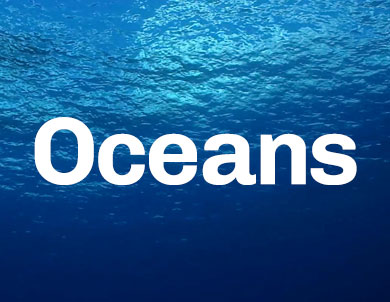
Discover oceans
Find out why we need to protect the oceans and read about the pioneering work of the Museum's marine scientists.

What on Earth?
Just how weird can the natural world be?
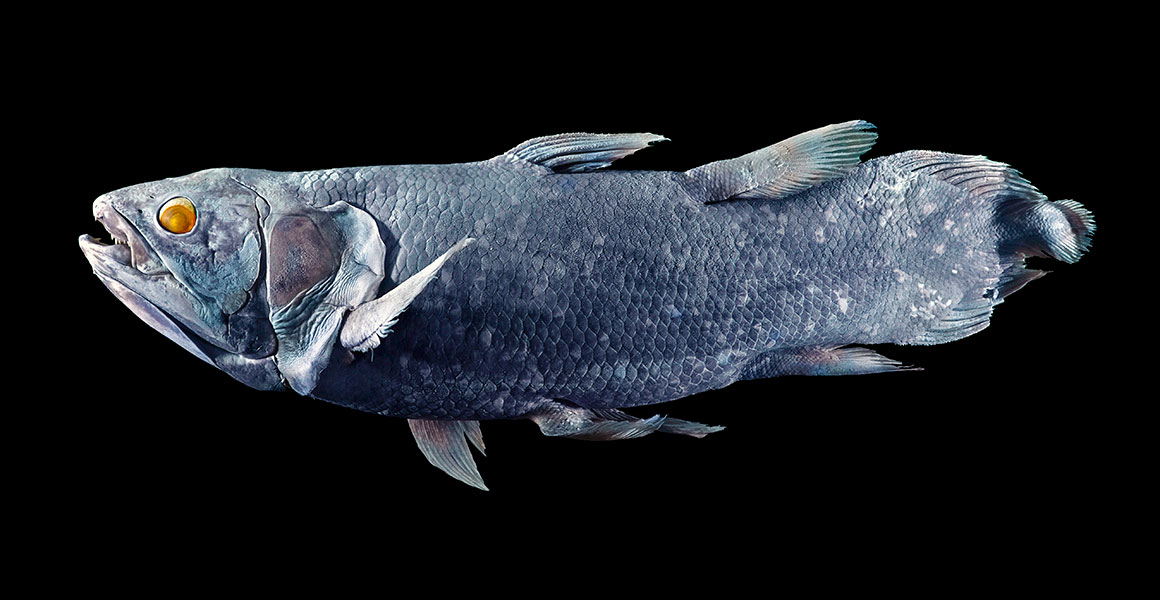
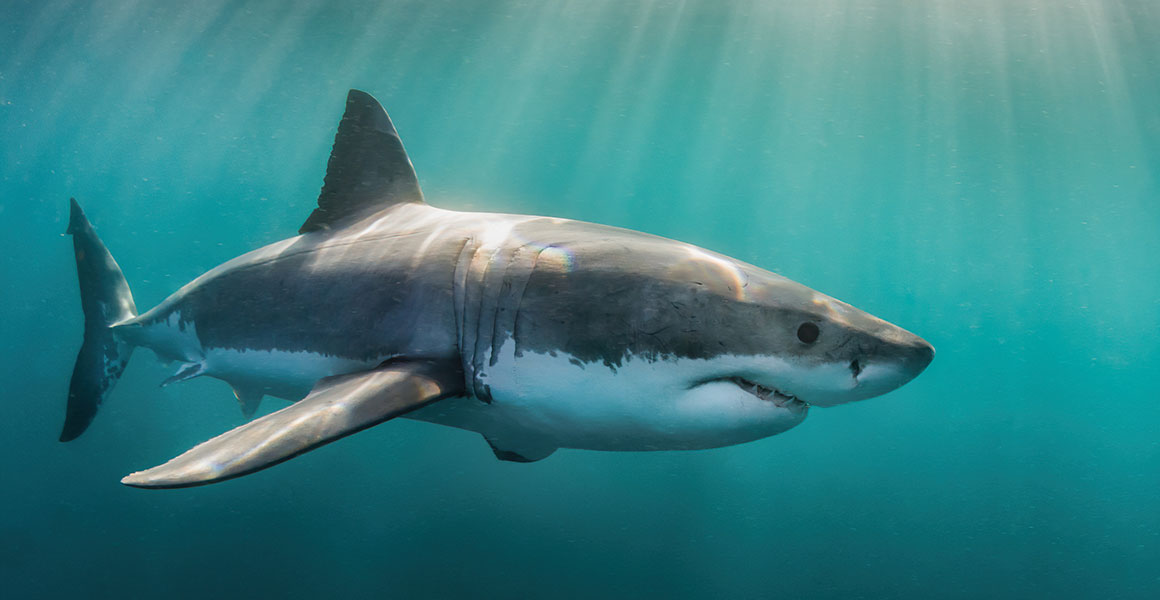
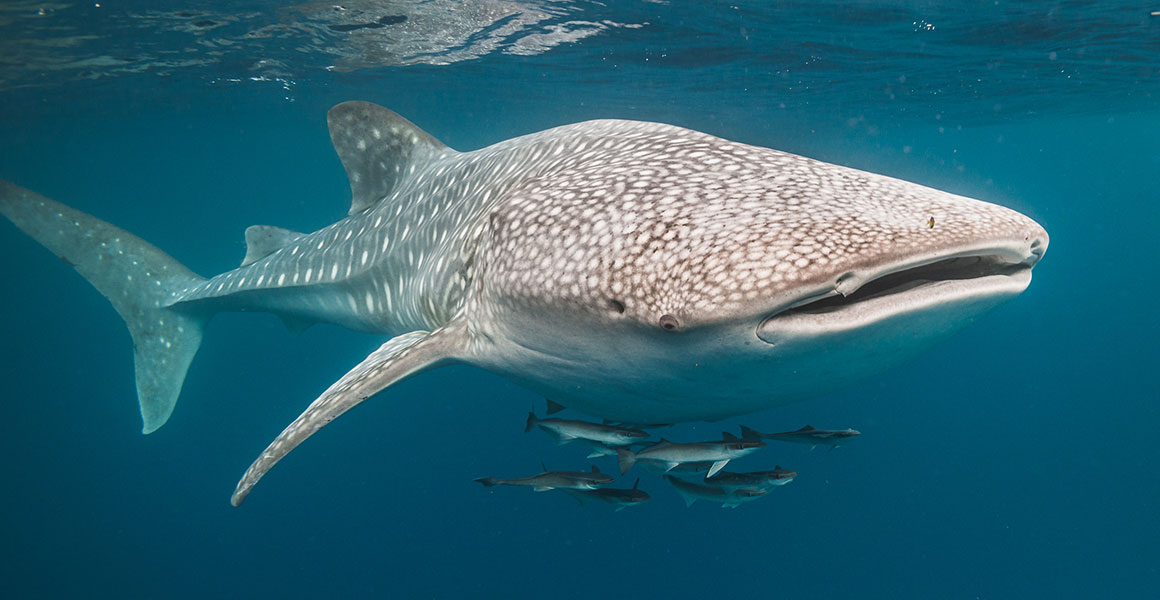
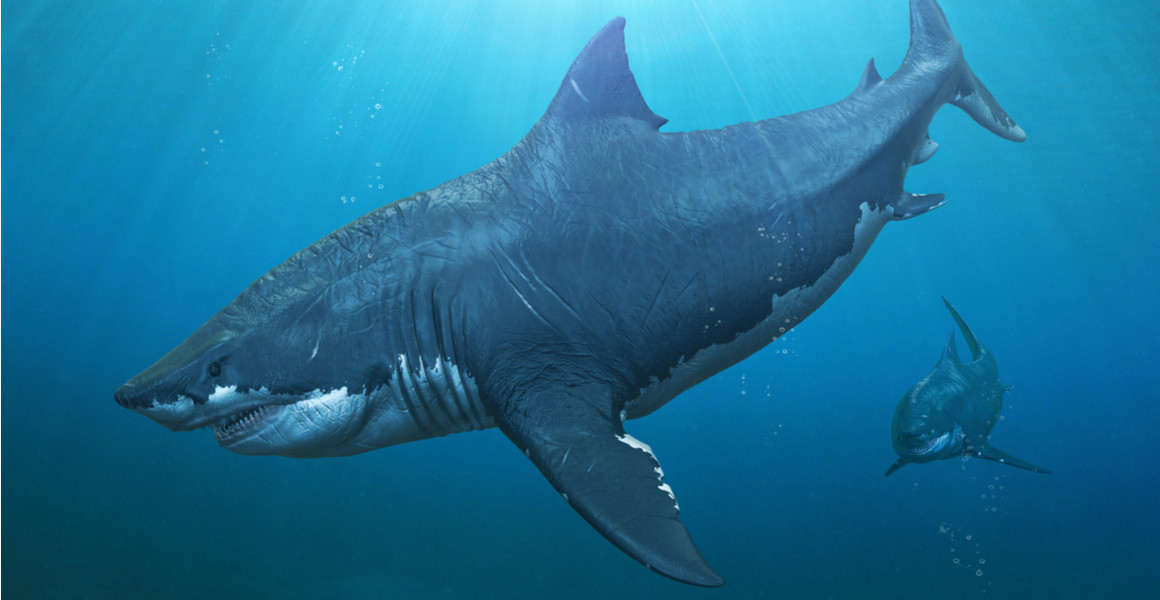
Don't miss a thing
Receive email updates about our news, science, exhibitions, events, products, services and fundraising activities. We may occasionally include third-party content from our corporate partners and other museums. We will not share your personal details with these third parties. You must be over the age of 13. Privacy notice.
Follow us on social media